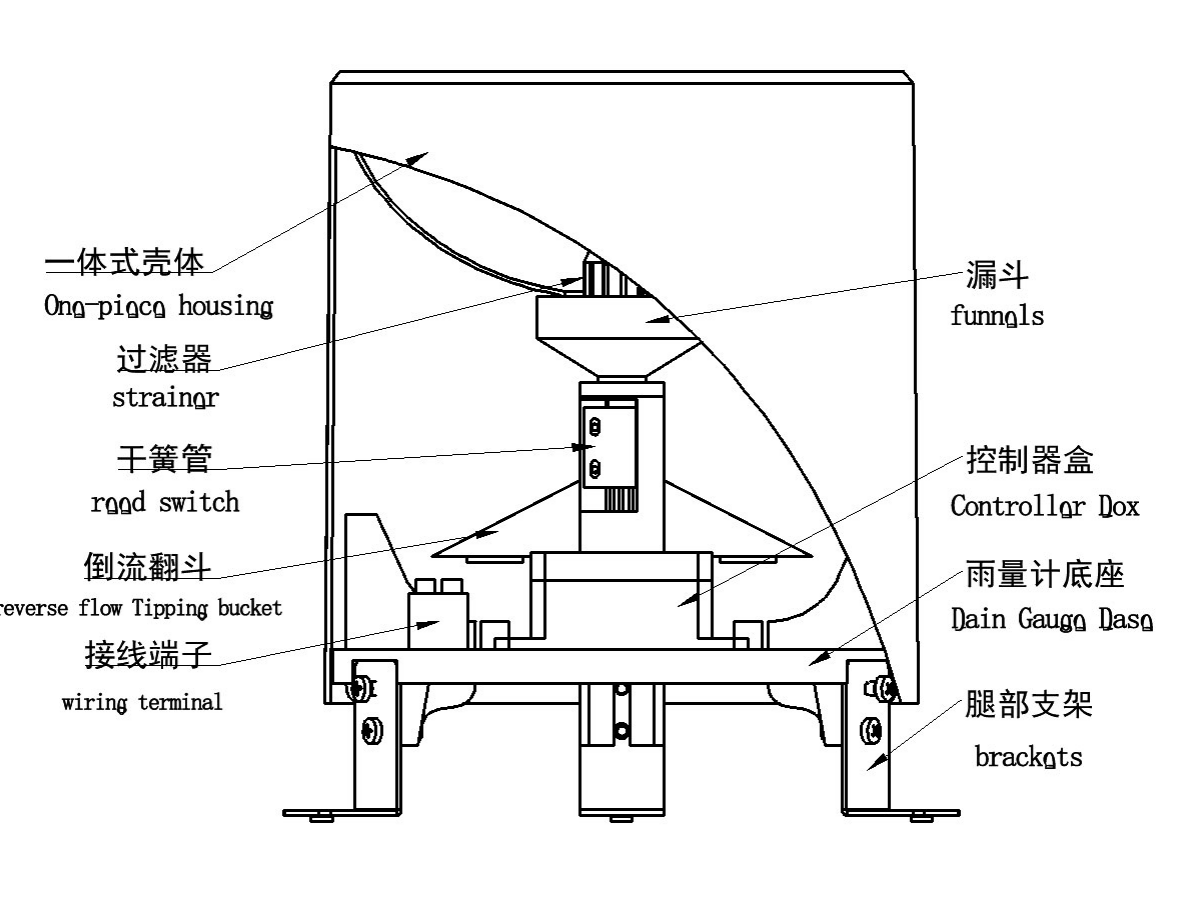

— Blogs —
—Products—
 Consumer hotline +8618073152920
Consumer hotline +8618073152920 WhatsApp:+8615367865107
Address:Room 102, District D, Houhu Industrial Park, Yuelu District, Changsha City, Hunan Province, China
Product knowledge
Time:2023-09-11 14:25:33 Popularity:10877
Tipping bucket type rain gauge is a device used to measure precipitation, specifically rainfall. It is a commonly used instrument in meteorology, hydrology, agriculture, and environmental monitoring fields. This article will introduce the working principle of the tipping bucket type rain gauge, as well as its applications and value.
What is Tipping Bucket Type Rain Gauge?
A tipping bucket type rain gauge is a device that measures rainfall through the collection and counting of droplets. It consists of a funnel-shaped collector that directs the rainwater into a small-sized bucket with a tiny hole at the bottom. When the water reaches a certain level, the bucket tips over, and this signals that a fixed amount of precipitation has been collected. The tipping bucket then resets to its initial position, ready for the next batch of rainfall.
Working Principle of Tipping Bucket Type Rain Gauge
The tipping bucket type rain gauge works on the principle of counting the number of tips made by a small bucket when it fills and empties. The bucket size is determined based on the capacity of the rain gauge to collect and measure precipitation accurately. The tipping bucket type rain gauge uses a magnetic or optical sensor to detect each tip of the bucket and record it electronically.

As the rain flows into the collector and fills up the bucket, the weight of the water causes the bucket to tip over, allowing the water to empty out. The tipping process creates a signal that is detected by the sensor and recorded by the data logger. The count of the tips is proportional to the amount of precipitation, and this data can be converted into rainfall depth or intensity measurements.
Applications and Value of Tipping Bucket Type Rain Gauge
Tipping bucket type rain gauge is widely used in meteorological and hydrological fields to measure rainfall intensity and distribution accurately. It is also used in agriculture to monitor irrigation requirements, crop growth, and yield predictions. Additionally, tipping bucket rain gauges are used in environmental monitoring, urban planning, and water resource management.
Tipping bucket type rain gauges have several advantages over other types of precipitation measurement instruments. They have a high degree of accuracy, are relatively easy to install, require low maintenance, and can collect data continuously. The data collected can be used to predict weather conditions, monitor flood risks, and optimize water resource management strategies.

Conclusion
The tipping bucket type rain gauge is a valuable and widely used instrument for measuring rainfall. Its simple design, high accuracy, and continuous data collection make it an ideal choice for meteorological, hydrological, agricultural, and environmental monitoring applications. As climate change and its impacts become more evident, the need for accurate and reliable precipitation data will continue to grow, making the tipping bucket type rain gauge an essential tool for researchers, engineers, and policymakers alike.
Related recommendations
Sensors & Weather Stations Catalog
Agriculture Sensors and Weather Stations Catalog-NiuBoL.pdf
Weather Stations Catalog-NiuBoL.pdf
Related products
 Combined air temperature and relative humidity sensor
Combined air temperature and relative humidity sensor Soil Moisture Temperature sensor for irrigation
Soil Moisture Temperature sensor for irrigation Soil pH sensor RS485 soil Testing instrument soil ph meter for agriculture
Soil pH sensor RS485 soil Testing instrument soil ph meter for agriculture Wind Speed sensor Output Modbus/RS485/Analog/0-5V/4-20mA
Wind Speed sensor Output Modbus/RS485/Analog/0-5V/4-20mA Tipping bucket rain gauge for weather monitoring auto rainfall sensor RS485/Outdoor/stainless steel
Tipping bucket rain gauge for weather monitoring auto rainfall sensor RS485/Outdoor/stainless steel Pyranometer Solar Radiation Sensor 4-20mA/RS485
Pyranometer Solar Radiation Sensor 4-20mA/RS485
Screenshot, WhatsApp to identify the QR code
WhatsApp number:+8615367865107
(Click on WhatsApp to copy and add friends)